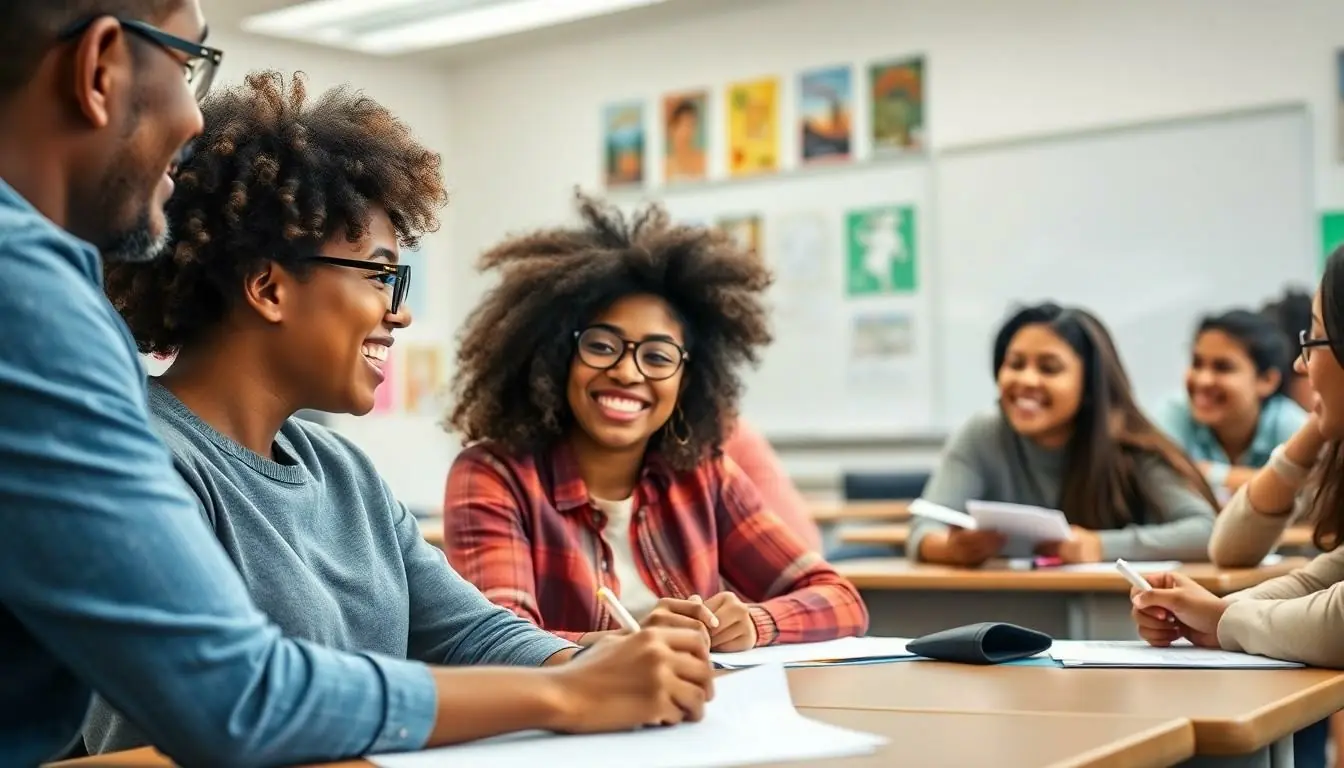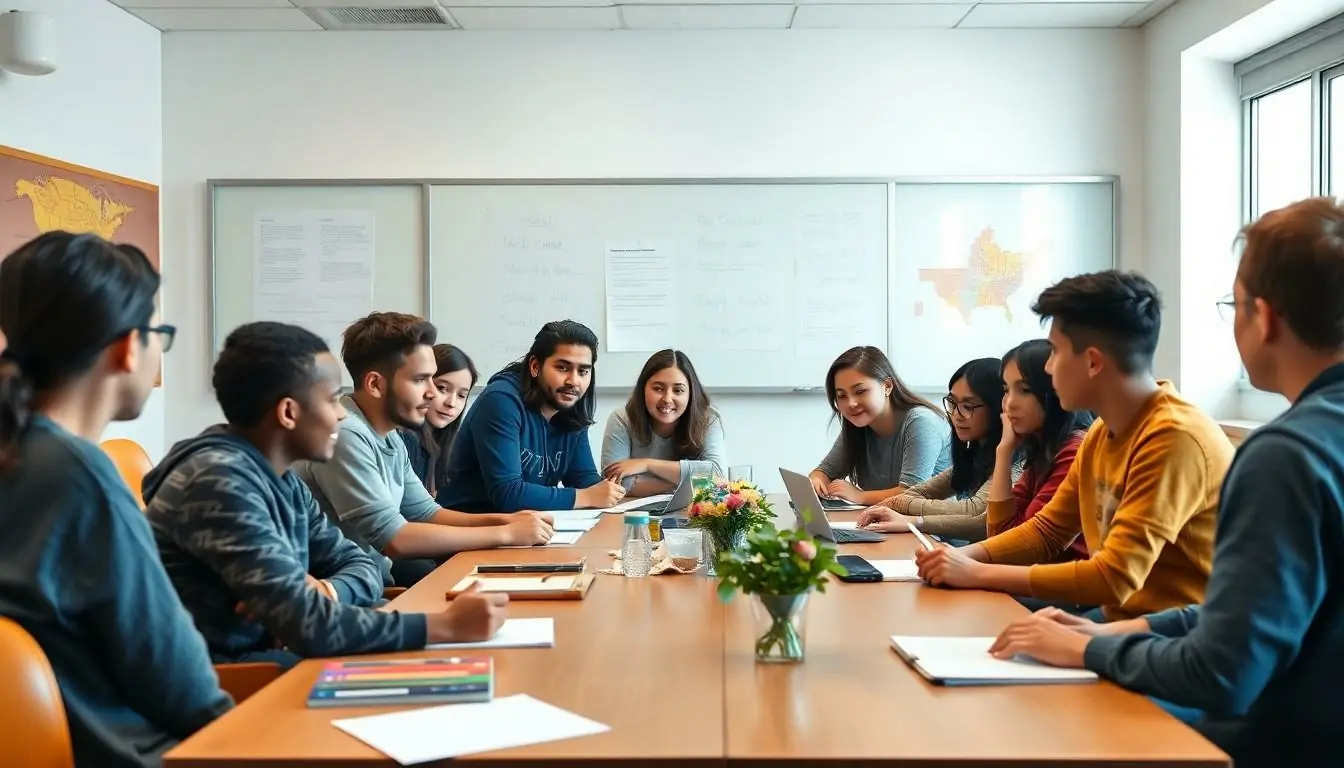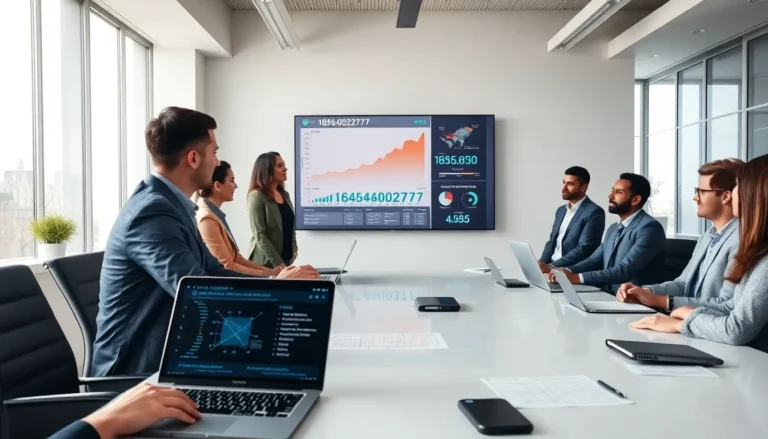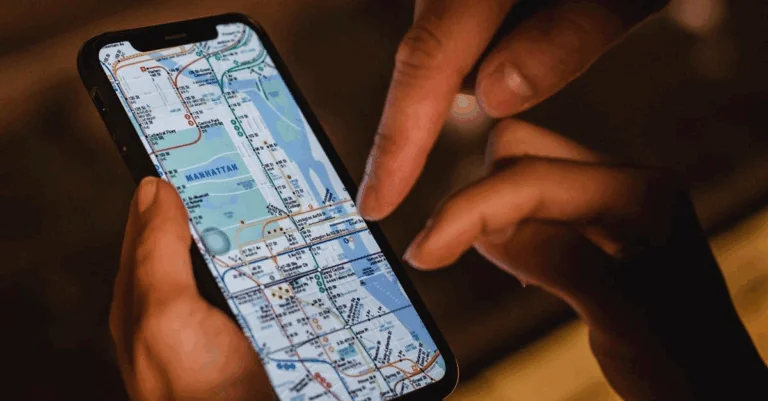In the bustling world of academia, student to student feedback is like the secret sauce that can turn a mediocre dish into a gourmet meal. Imagine a classroom where peers share insights that spark creativity and boost confidence. It’s not just about grades; it’s about building a community where everyone’s voice matters.
Picture this: a student nervously presenting their project, and instead of crickets, they hear constructive comments that make them feel like a rock star. This dynamic exchange not only enhances learning but also fosters lasting friendships. So why not embrace the power of peer feedback? It’s time to transform those awkward moments into opportunities for growth and laughter. After all, who wouldn’t want to learn from a friend rather than a textbook?
Table of Contents
ToggleOverview of Student to Student Feedback
Student-to-student feedback serves as a vital component in educational settings. This practice encourages active engagement and collaboration among peers. Feedback from classmates can offer unique perspectives that instructors may overlook.
In discussions and presentations, students often feel more comfortable sharing insights with their peers. Constructive criticism from fellow students can lead to significant improvements in understanding and performance. When a student hears positive reinforcement from a peer, it can build confidence and motivation.
Peer assessments create an environment that promotes accountability. Students develop critical thinking skills while evaluating their peers’ work. In return, they benefit from receiving varied viewpoints on their own contributions.
Effective feedback focuses on specific elements, whether in writing, projects, or group activities. This specificity helps clarify expectations and standards. Students learn to articulate their thoughts clearly, enhancing communication skills.
The sense of community created through this feedback system fosters lasting relationships. As students share their experiences and ideas, they build a supportive network. These connections not only enhance learning but also contribute to personal growth and collaboration.
Research shows that student-to-student feedback can significantly improve academic outcomes. Engaging in this process cultivates a culture of continuous improvement. Students are more likely to reflect on their learning processes and embrace challenges when they receive and provide constructive critiques.
Embracing student-to-student feedback enriches the educational experience, transforming traditional learning into an interactive, supportive journey.
Importance of Student to Student Feedback
Student-to-student feedback significantly impacts the educational environment. It encourages students to engage deeply with course material.
Enhancing Learning Outcomes
Peer feedback enhances learning outcomes by offering diverse insights that educators may overlook. Classmates provide unique viewpoints, facilitating deeper understanding and encouraging critical thinking. Constructive criticism from peers helps identify areas for improvement, enabling students to refine their ideas and skills. Research shows that actively engaging in peer assessments promotes higher academic performance and satisfaction. Positive reinforcement from classmates builds self-esteem and motivation. This feedback loop cultivates a culture of collaboration, ultimately leading to improved academic results.
Building Collaborative Skills
Collaborative skills develop through the process of giving and receiving feedback. Students learn to navigate discussions, articulate thoughts, and genuinely listen to others. Working together fosters a supportive atmosphere, encouraging friendships and teamwork. Participating in peer evaluations sharpens critical analyses and enhances communication abilities. As students assess each other’s work, they gain varied perspectives, which broadens their understanding of different subject matters. This practice prepares individuals for real-world scenarios where collaboration is essential. Building these skills through peer feedback creates a strong foundation for future educational and professional success.
Methods of Providing Student to Student Feedback
Implementing diverse methods for student-to-student feedback enhances learning engagement and effectiveness. These strategies promote collaboration and critical thinking among peers.
Peer Review Sessions
Peer review sessions create structured environments for students to exchange feedback. Participants assess each other’s work, focusing on specific criteria. Clear guidelines help maintain consistency in evaluations. The process encourages honest dialogue and constructive critiques. Students learn to articulate thoughts clearly and appreciate diverse perspectives. Often, this collaborative atmosphere fosters accountability and strengthens relationships among classmates.
Online Feedback Platforms
Online feedback platforms facilitate seamless communication between students. These digital tools enable real-time sharing of work and comments. Flexibility allows for asynchronous interactions, accommodating various schedules. Many platforms offer features like anonymous feedback, promoting candid responses. Constructive suggestions help refine skills and enhance understanding of the material. Students also benefit from engaging in broader discussions, expanding their learning outside the classroom setting.
Challenges in Implementing Student to Student Feedback
Implementing student-to-student feedback faces several challenges that can impact its effectiveness.
Overcoming Communication Barriers
Communication barriers can hinder meaningful exchanges among students. Language differences pose a significant obstacle, as students may struggle to articulate their thoughts clearly. Various communication styles also affect how feedback is received and perceived. Ensuring an inclusive environment is vital, as some students may feel shy or apprehensive about speaking up in front of peers. Training students in effective communication techniques fosters clarity and understanding. Creating guidelines for giving and receiving feedback encourages open dialogue, making the process smoother. Integrating structured activities can help students practice these skills and overcome initial discomfort, which boosts confidence in sharing insights.
Ensuring Constructive Feedback
Ensuring that feedback remains constructive requires careful consideration. Students must learn how to provide specific, actionable comments rather than vague statements. Encouraging a focus on strengths and areas for improvement balances criticism and support. Establishing clear criteria for assessments guides students in delivering meaningful feedback. Model effective feedback examples during training sessions to provide a reference point. Encouragement of a positive mindset helps students accept feedback as a valuable tool for growth rather than a personal critique. Incorporating peer review checklists can streamline evaluations and promote accountability. Keeping these elements in mind enhances the overall quality of peer interactions, fostering a more enriching educational atmosphere.
Best Practices for Effective Student to Student Feedback
Establishing a structured environment enhances the effectiveness of feedback exchanges. Peer review sessions enable students to focus on specific criteria, fostering honest discussions. Creating guidelines for feedback can provide clarity that improves communication.
Encouraging specific and actionable comments helps maintain the quality of interactions. Positive reinforcement builds students’ confidence, motivating them to share insights openly. Emphasizing a supportive atmosphere promotes collaborative skills as students articulate thoughts and listen genuinely.
Implementing online feedback platforms allows for real-time sharing. Such methods facilitate asynchronous interactions where students can engage without time constraints. Creating opportunities for varied perspectives enriches the learning experience significantly.
Training students in effective communication techniques reduces misunderstandings. Addressing language differences directly contributes to meaningful exchanges among peers. Encouraging a culture of constructive criticism strengthens academic performance and personal growth.
Utilizing peer assessment can ignite accountability and enhance critical thinking skills. Students learn to evaluate each other’s work, gaining diverse viewpoints that deepen understanding. As engagement increases, motivation follows, creating a cycle of continuous improvement.
Building a positive feedback culture lays the foundation for lasting relationships. This practice not only enhances academic outcomes but also prepares students for future collaborative efforts. Prioritizing these strategies ultimately transforms traditional learning into an interactive experience that thrives on peer contributions.
Conclusion
Embracing student-to-student feedback is essential for creating a dynamic and engaging learning environment. This practice not only enhances academic performance but also fosters essential skills like critical thinking and effective communication. By encouraging peer interactions, students build confidence and develop lasting relationships that contribute to their overall growth.
Implementing structured feedback methods and training students in communication techniques ensures that exchanges remain constructive and meaningful. As students navigate this process, they cultivate a supportive community that enriches their educational journey. Ultimately, prioritizing peer feedback transforms the classroom into a collaborative space where everyone can thrive.





